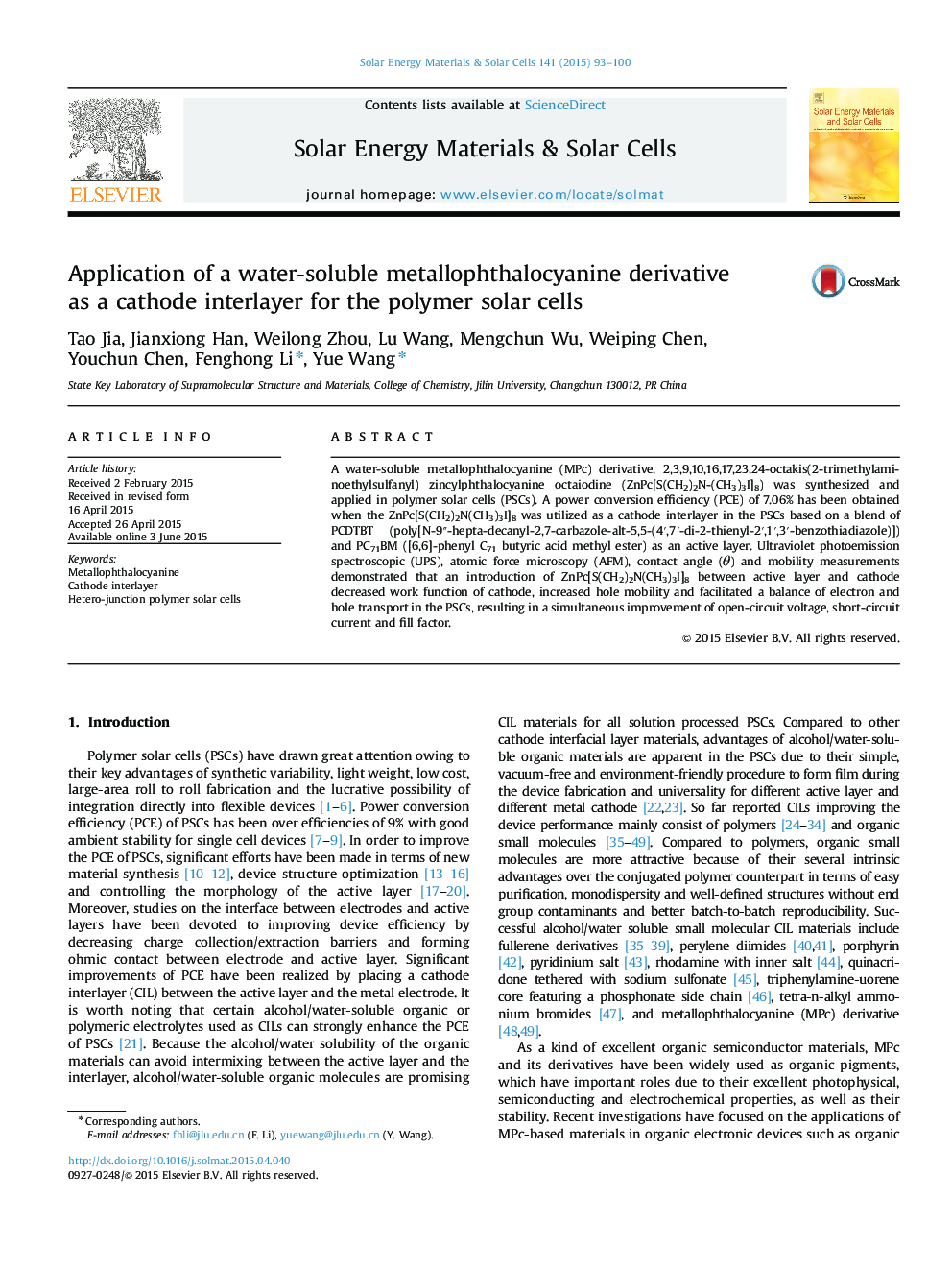| کد مقاله | کد نشریه | سال انتشار | مقاله انگلیسی | نسخه تمام متن |
|---|---|---|---|---|
| 77729 | 49298 | 2015 | 8 صفحه PDF | دانلود رایگان |
• ZnPc[S(CH2)2N(CH3)3I]8 was synthesized and successfully used as a cathode interlayer in the polymer solar cells (PSCs).
• ZnPc[S(CH2)2N(CH3)3I]8 decreased work function of cathode increased hole mobility and facilitated a balance of electron and hole transport in the PSCs.
A water-soluble metallophthalocyanine (MPc) derivative, 2,3,9,10,16,17,23,24-octakis(2-trimethylaminoethylsulfanyl) zincylphthalocyanine octaiodine (ZnPc[S(CH2)2N-(CH3)3I]8) was synthesized and applied in polymer solar cells (PSCs). A power conversion efficiency (PCE) of 7.06% has been obtained when the ZnPc[S(CH2)2N(CH3)3I]8 was utilized as a cathode interlayer in the PSCs based on a blend of PCDTBT (poly[N-9″-hepta-decanyl-2,7-carbazole-alt-5,5-(4′,7′-di-2-thienyl-2′,1′,3′-benzothiadiazole)]) and PC71BM ([6,6]-phenyl C71 butyric acid methyl ester) as an active layer. Ultraviolet photoemission spectroscopic (UPS), atomic force microscopy (AFM), contact angle (θ) and mobility measurements demonstrated that an introduction of ZnPc[S(CH2)2N(CH3)3I]8 between active layer and cathode decreased work function of cathode, increased hole mobility and facilitated a balance of electron and hole transport in the PSCs, resulting in a simultaneous improvement of open-circuit voltage, short-circuit current and fill factor.
A water-soluble metallophthalocyanine derivative ZnPc[S(CH2)2N(CH3)3I]8 was synthesized and applied in polymer solar cells (PSCs). A power conversion efficiency (PCE) of 7.06% has been obtained when the ZnPc[S(CH2)2N(CH3)3I]8 was utilized as a cathode interlayer in the PSCs based on a blend of PCDTBT and PC71BM as an active layer.Figure optionsDownload as PowerPoint slide
Journal: Solar Energy Materials and Solar Cells - Volume 141, October 2015, Pages 93–100
